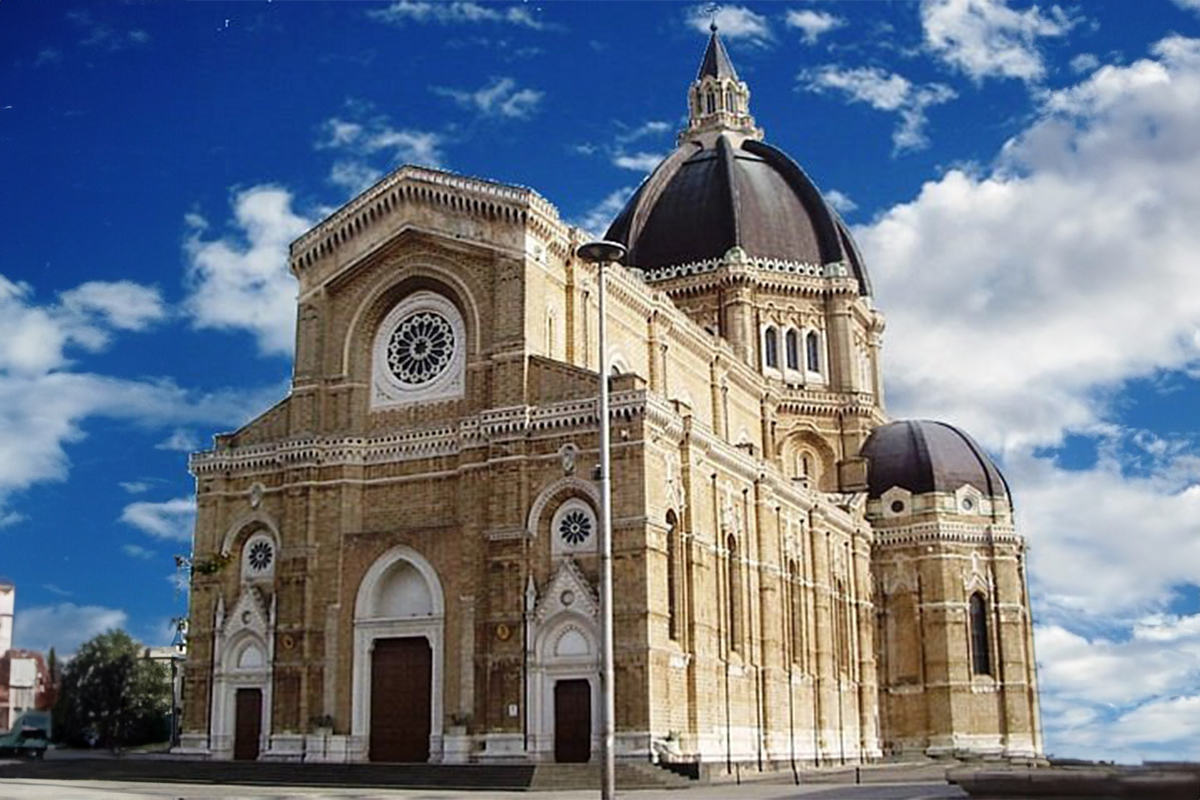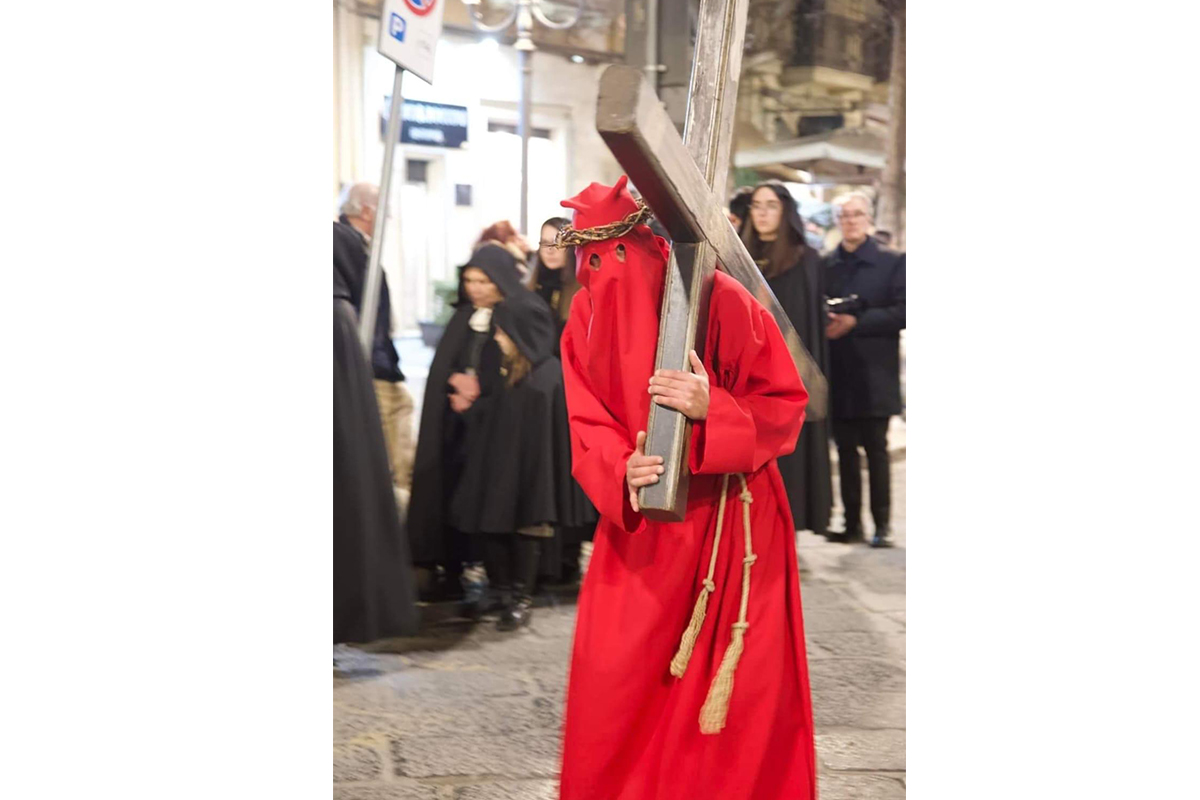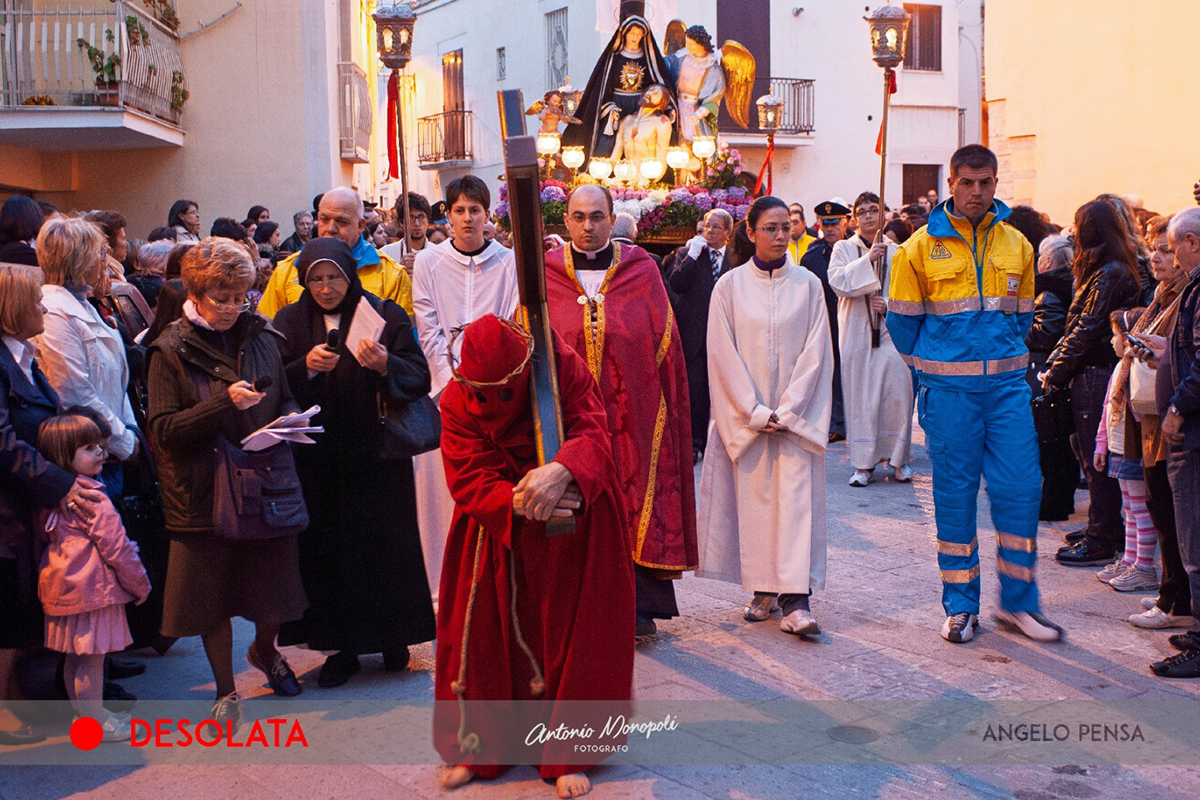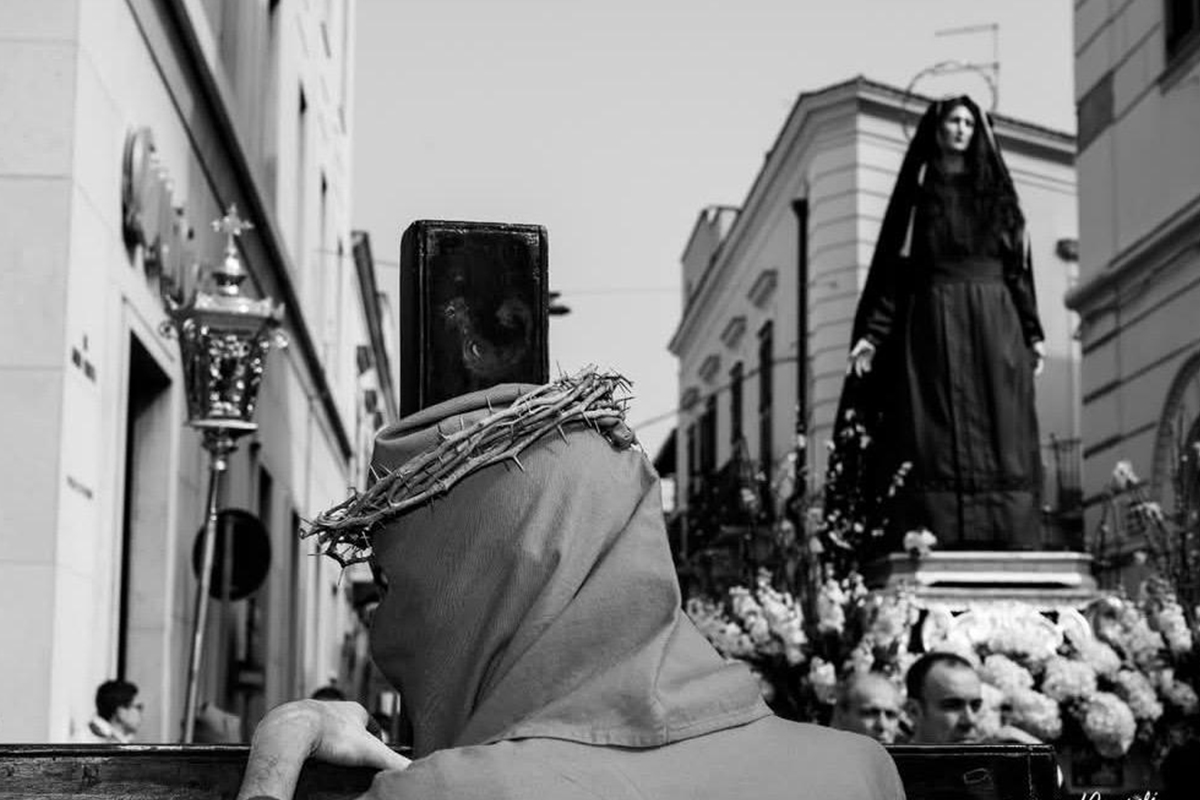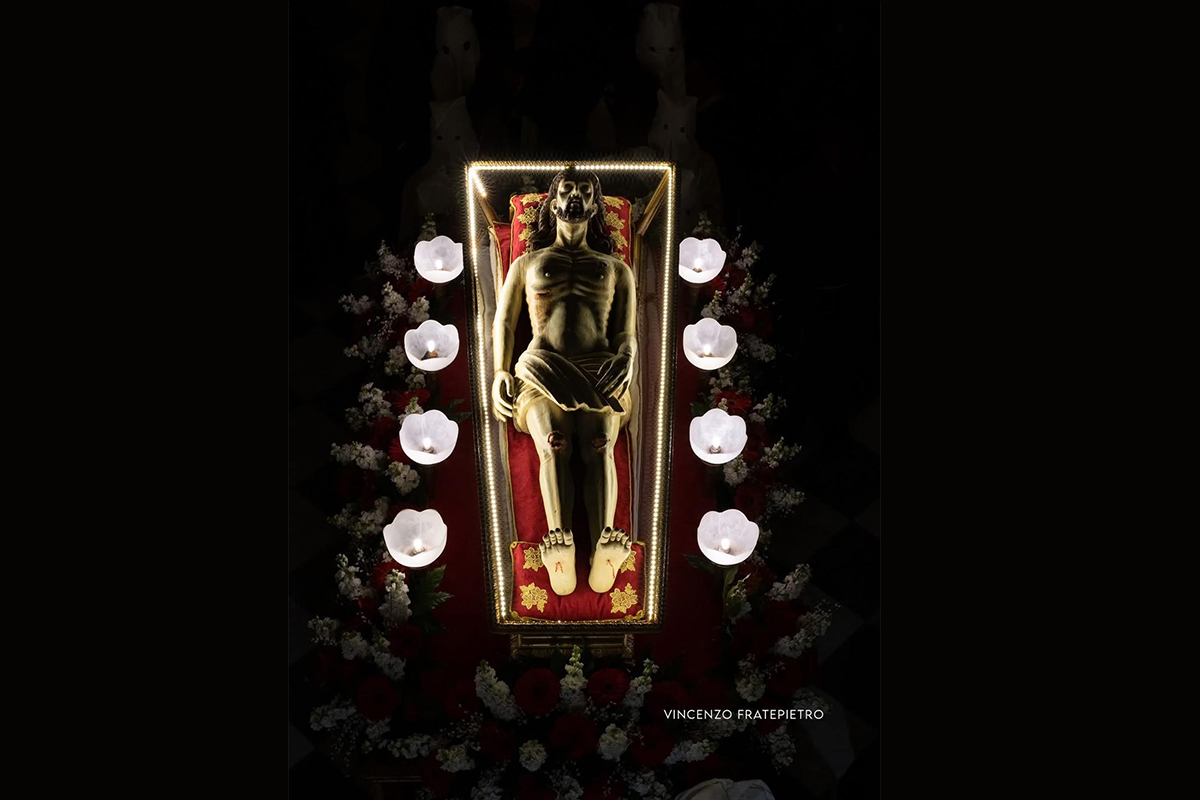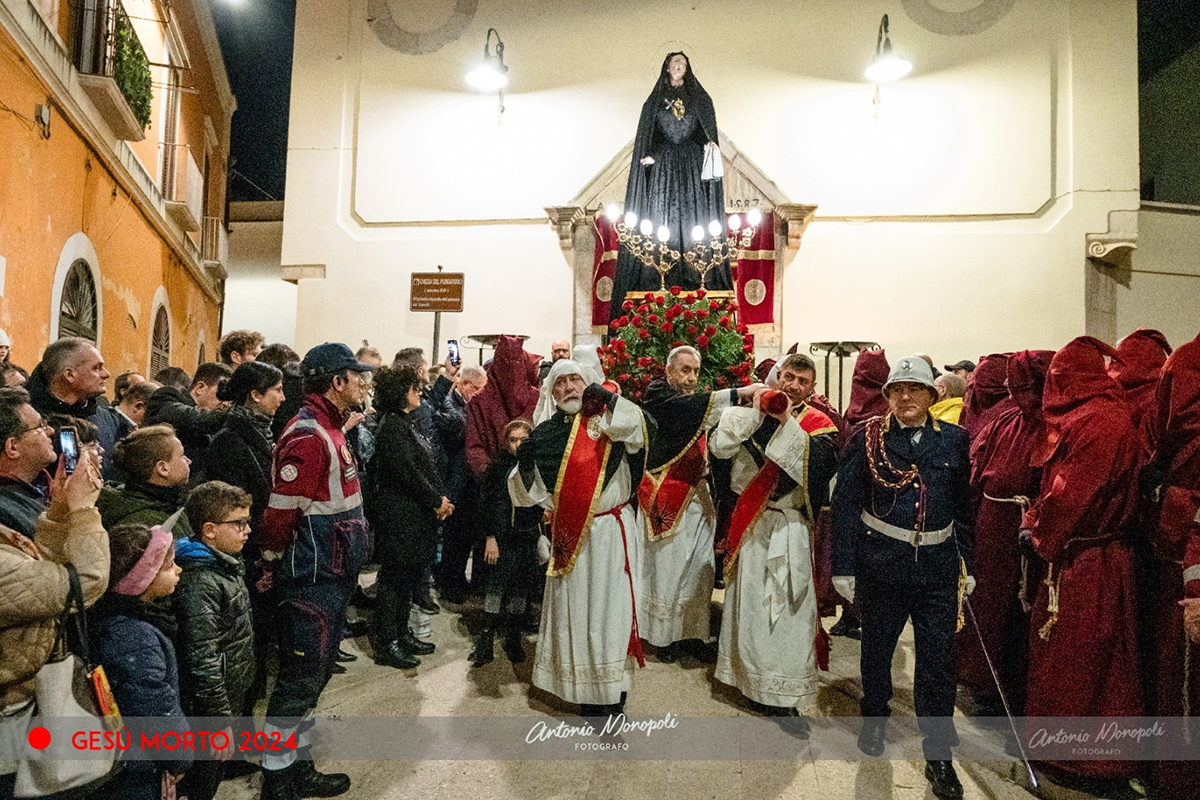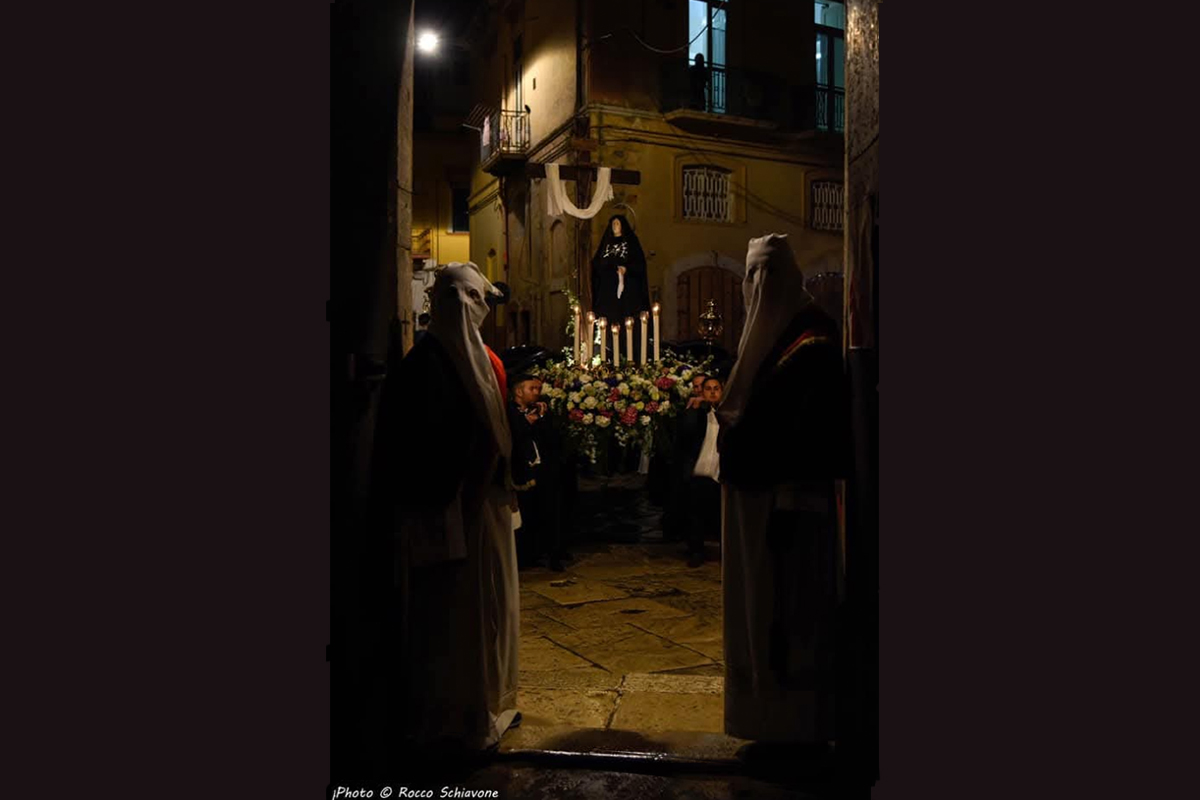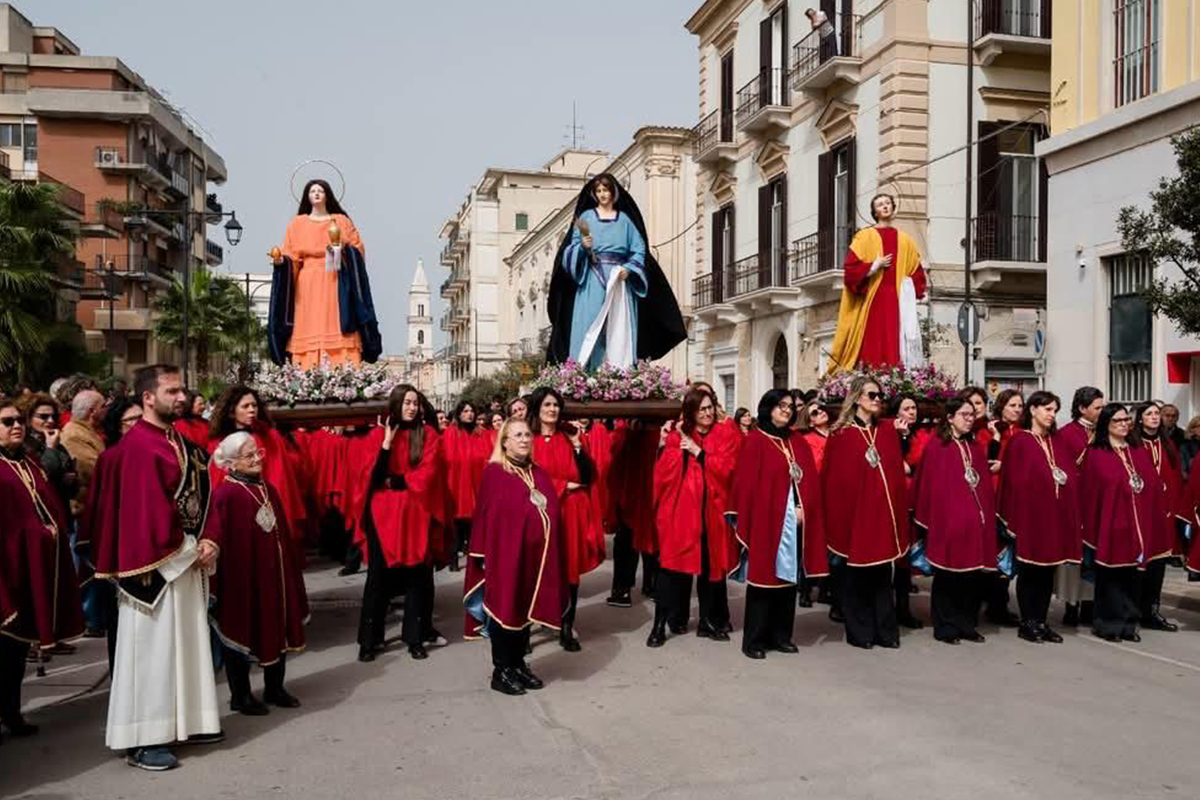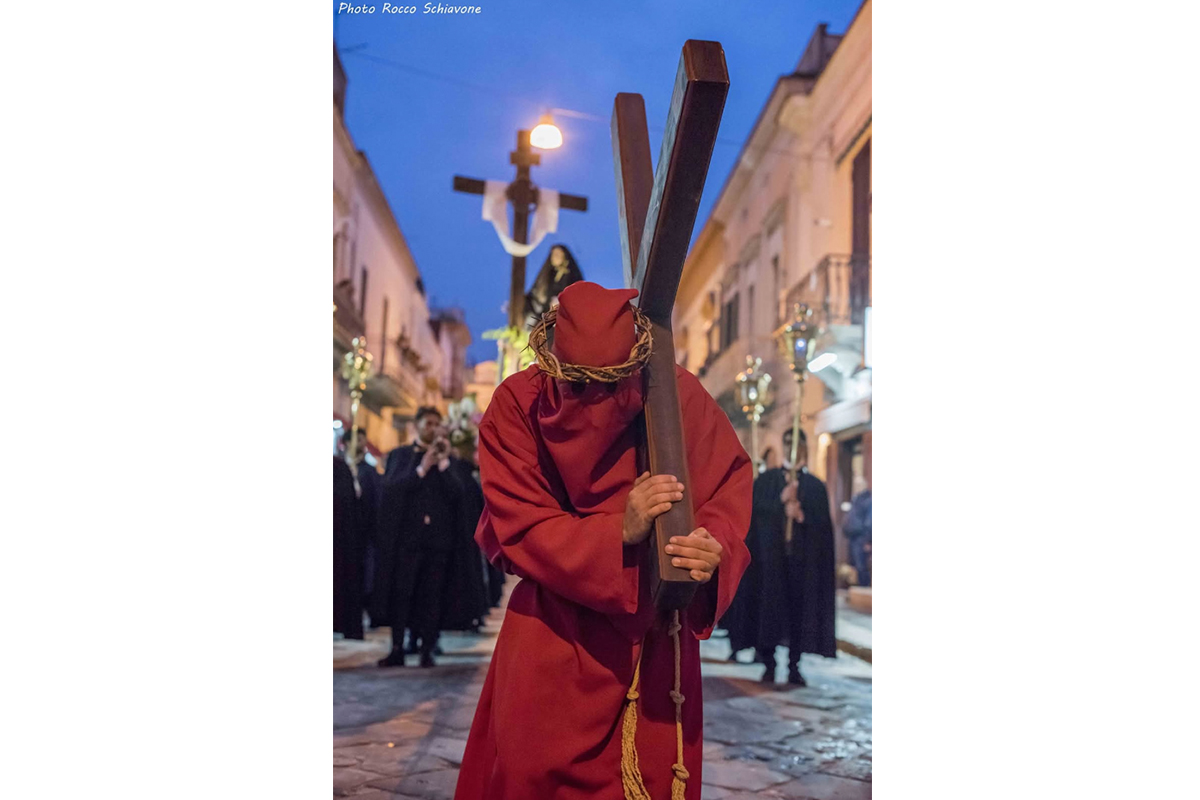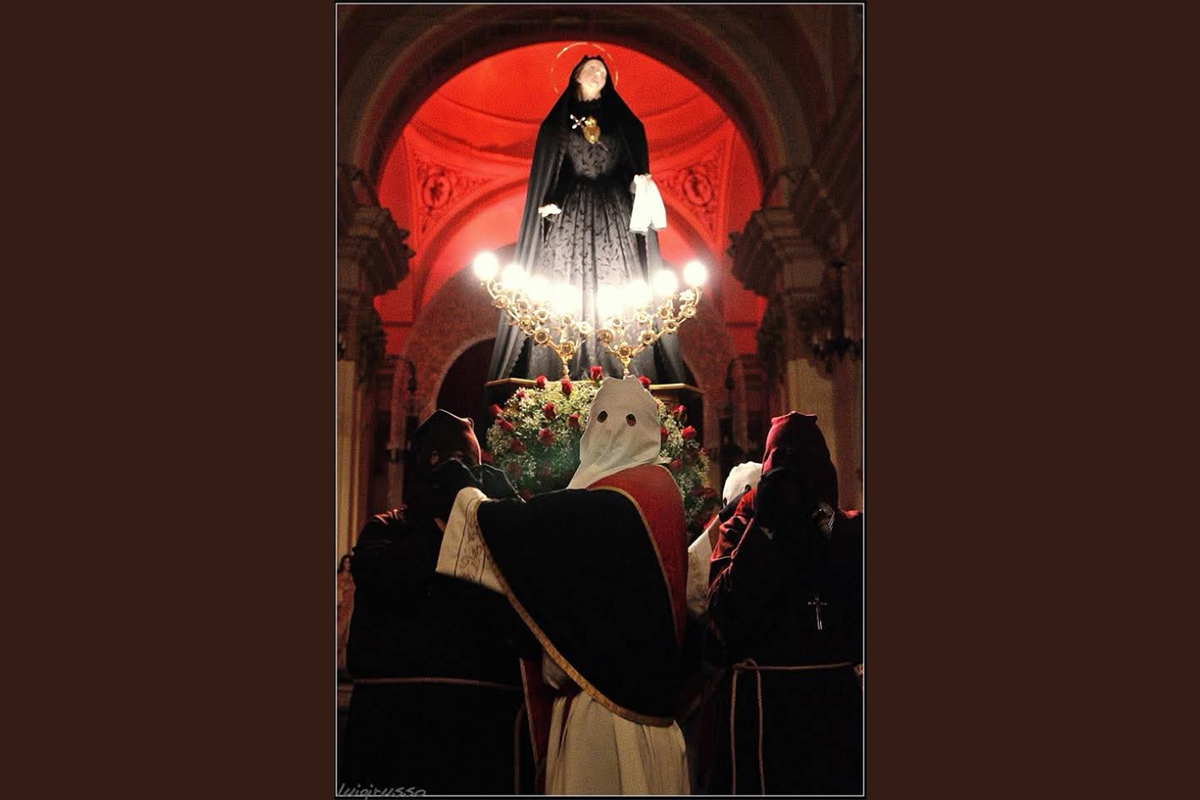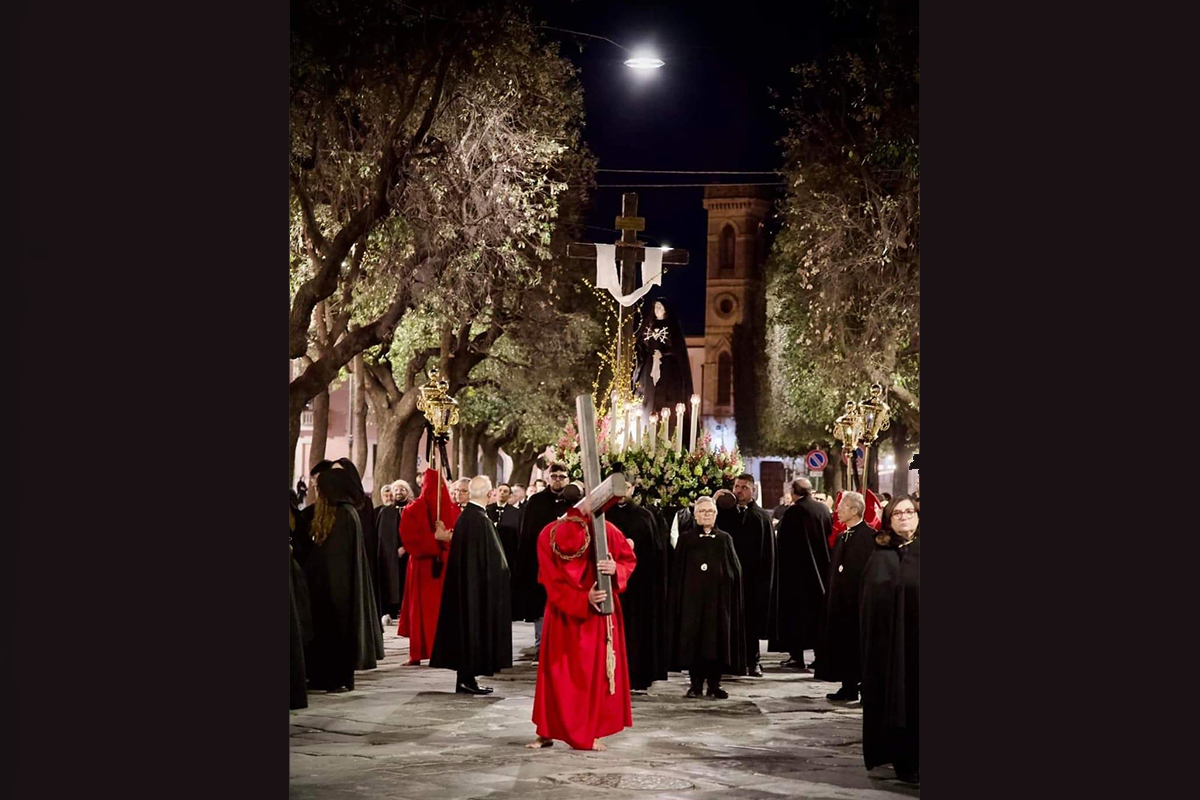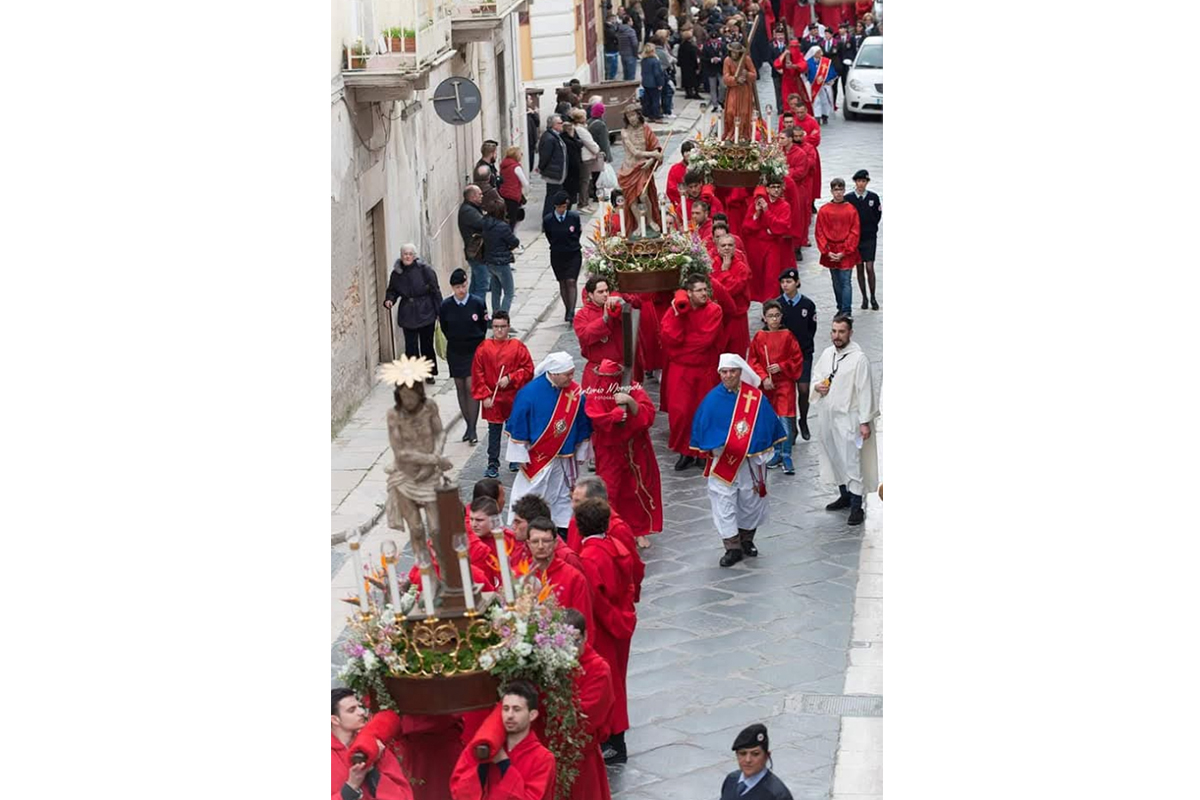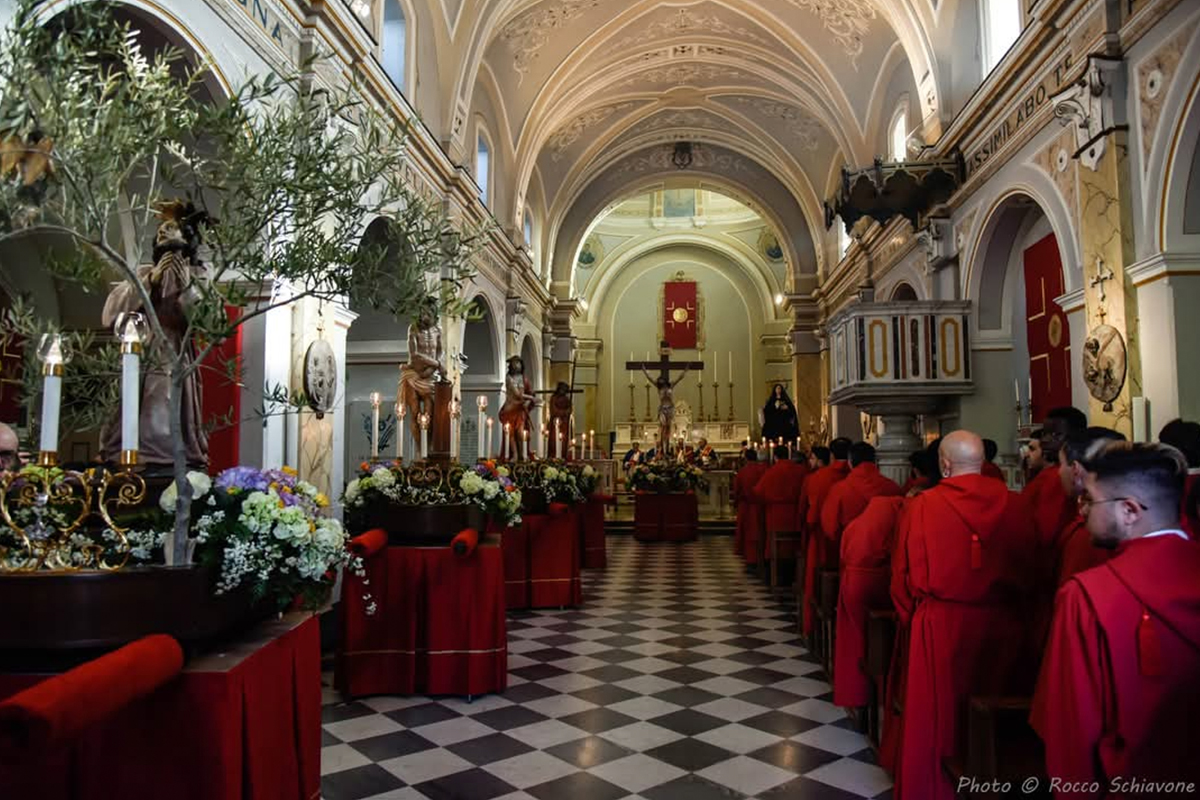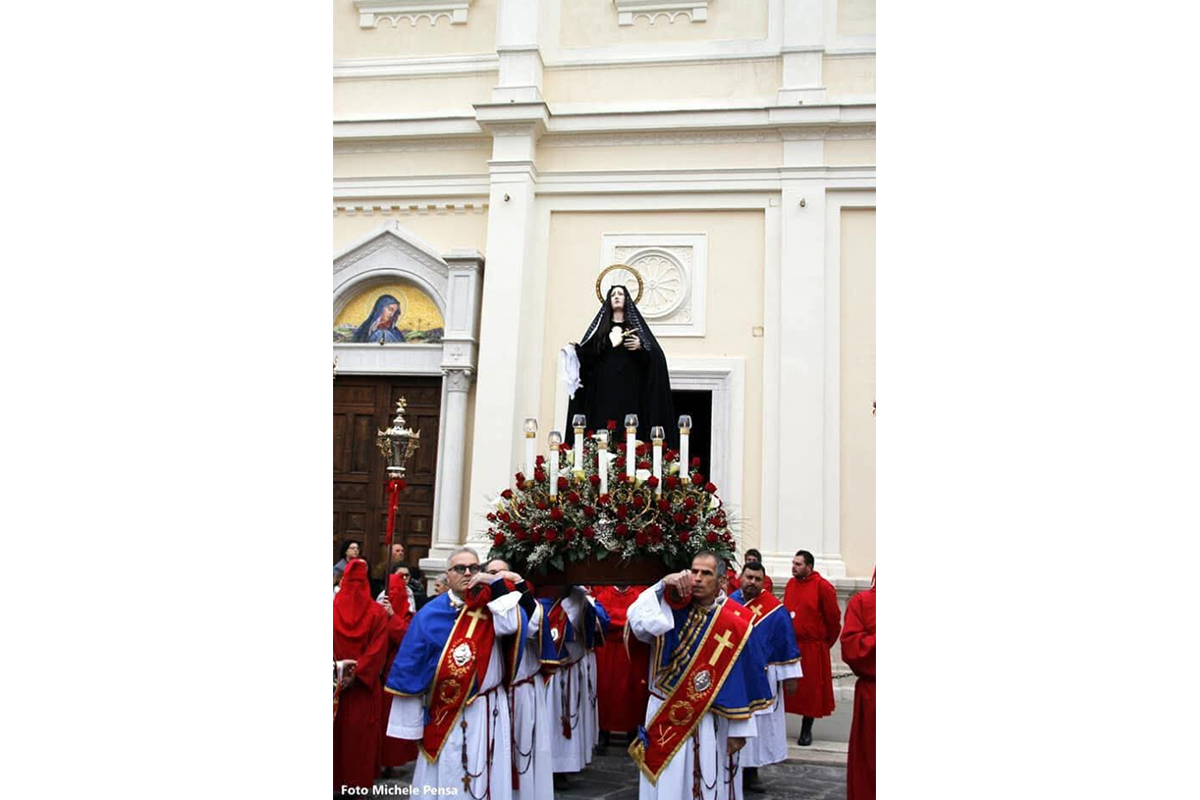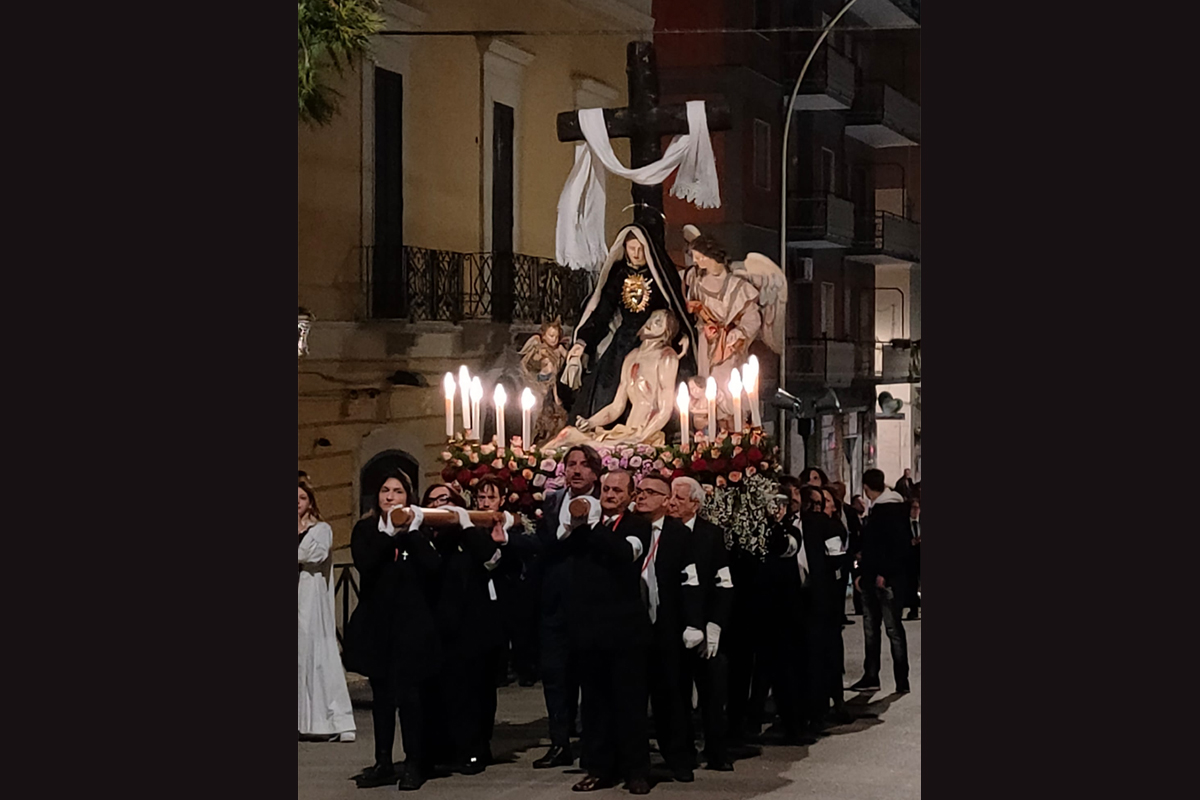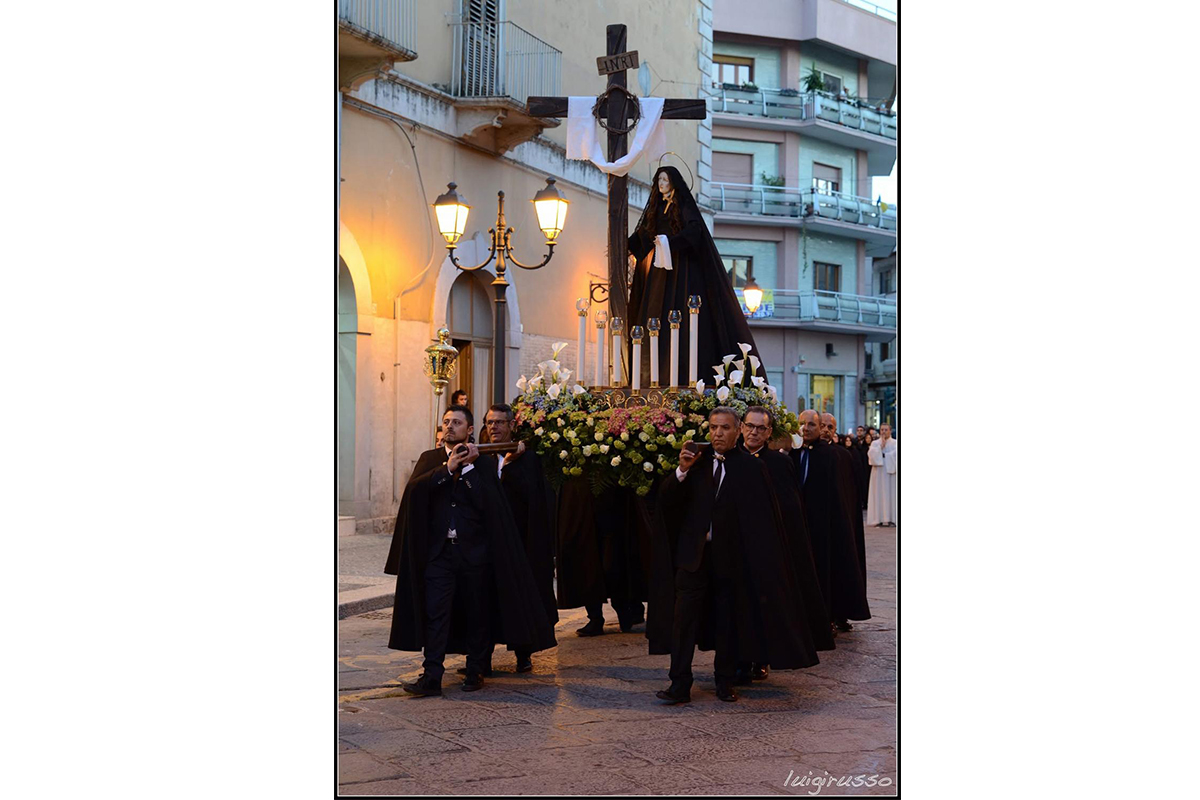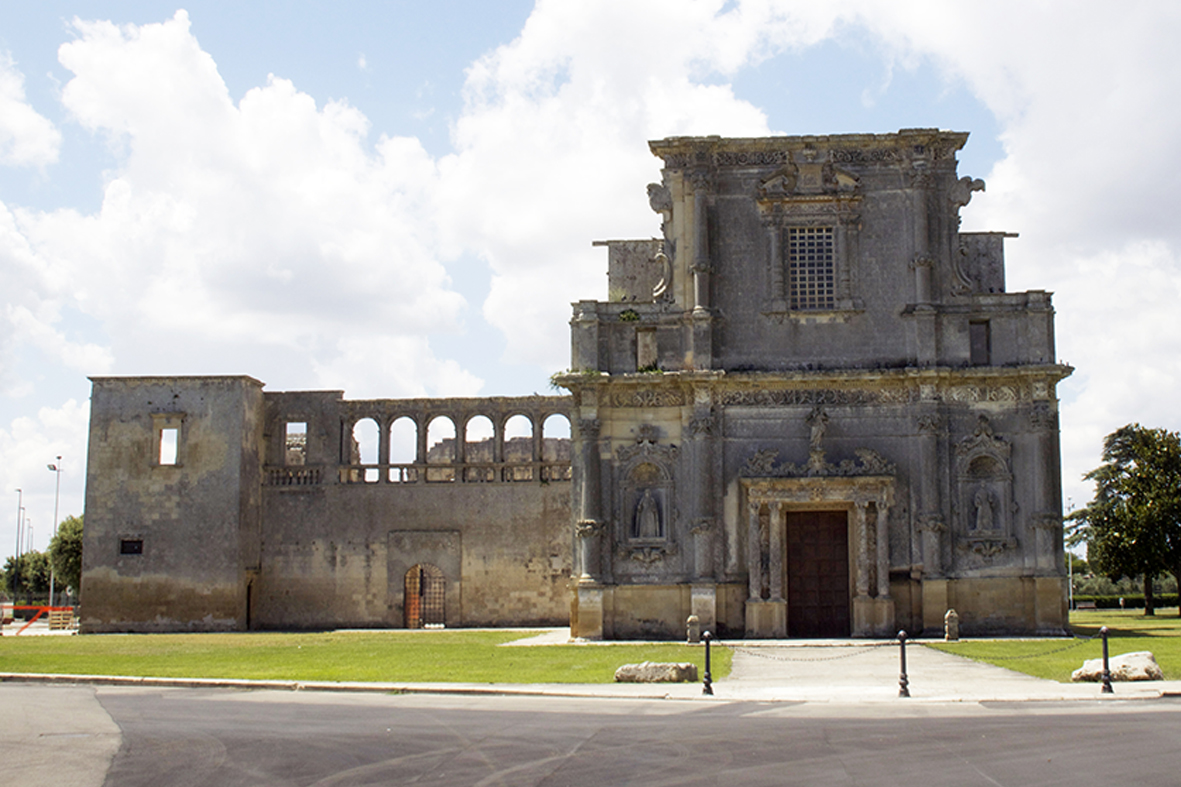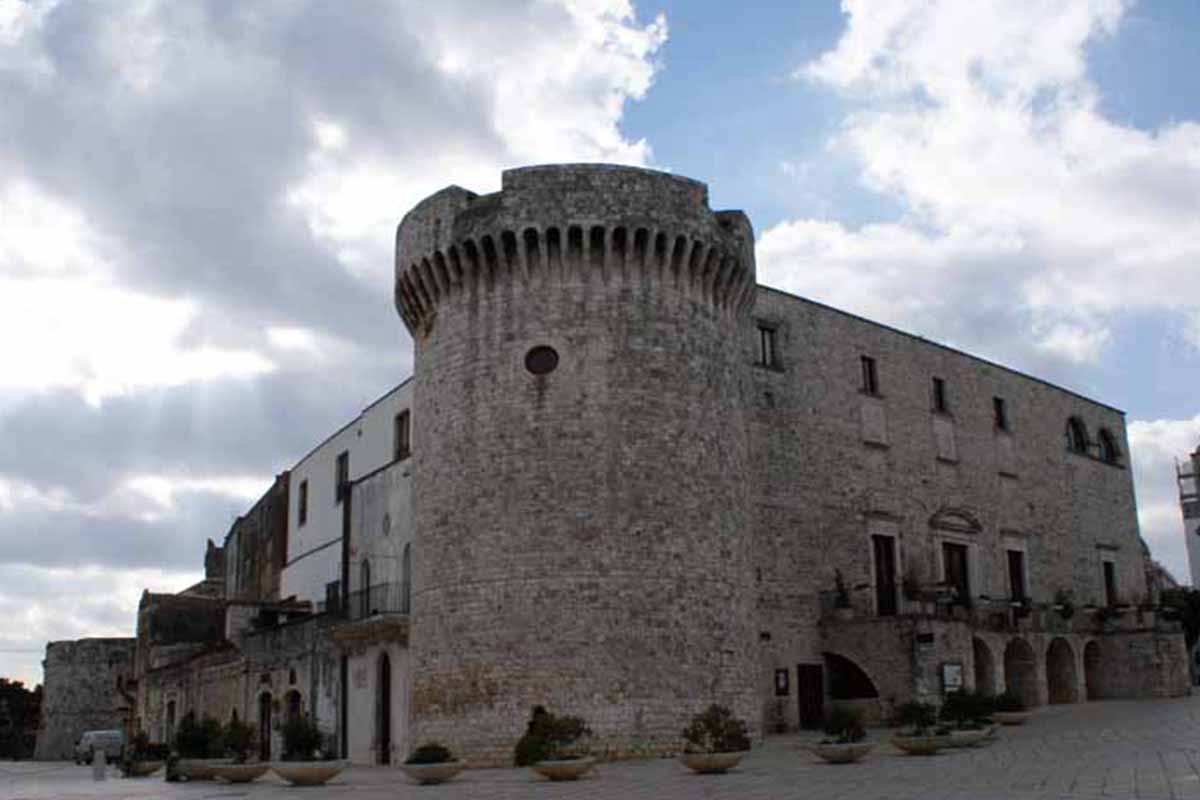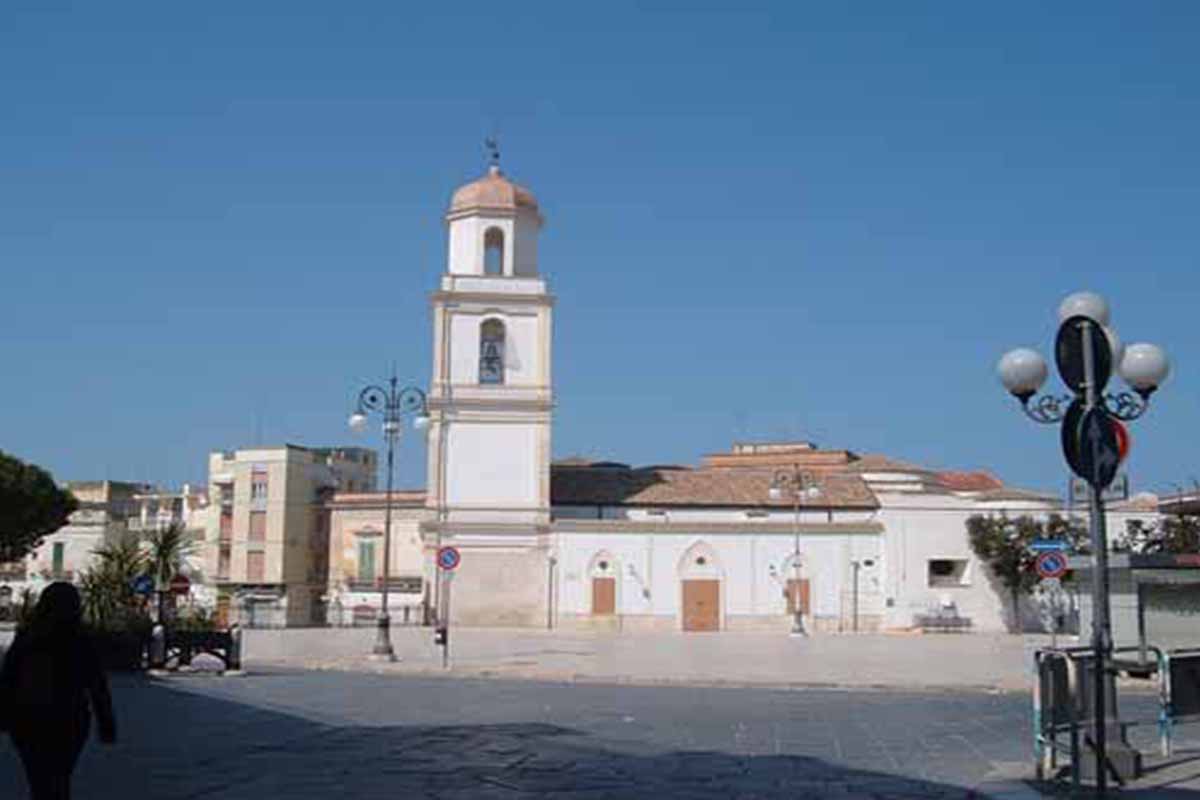Cities
Cerignola
08 Aprile 2025
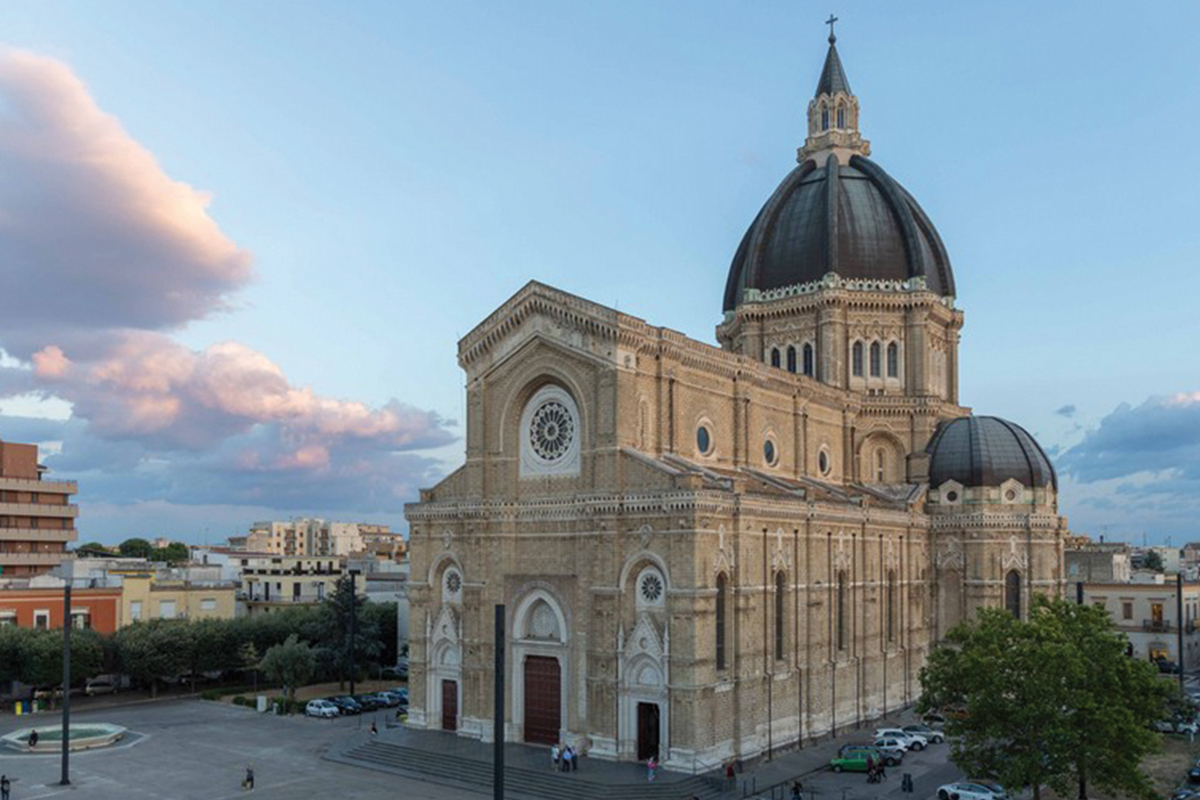
Cerignola (IPA: [tʃeriɲˈɲɔ:la], Cerignoul in the local dialect) is an Italian town with 56,945 inhabitants, located in the province of Foggia, in the region of Puglia, near the Ofanto Valley, on the rolling hills that mark the southern edge of the Tavoliere plain.
It is the largest municipality in Puglia and in all of southern Italy, and the third largest in the country, surpassed only by Rome and Ravenna. The inhabitants are known as cerignolani.
The town’s coat of arms features a stork breaking a snake, recalling the legend in which the city was saved by storks during a serpent invasion.
The top two-thirds of the background are blue, symbolizing the clear sky, while the lower third is gold, representing wheat, the main agricultural product of Cerignola.
The city is located near the lower Ofanto Valley, a strip of land that runs alongside the river of the same name, on the hills defining the southern boundary of the Tavoliere delle Puglie, between the Ofanto and Carapelle river basins, in one of the most extensive and fertile agricultural areas of Puglia.
Worth mentioning are the historic peasant struggles led by Giuseppe Di Vittorio, which secured greater rights for land workers, including the famous 50% share for tenant farmers, and marked a powerful affirmation of the trade union movement in Italy.
Cerignola is the birthplace of renowned linguist Nicola Zingarelli (1860–1935), author of the famous Italian language dictionary, and composer Pasquale Bona (1808–1878).
It is also the episcopal seat of the Diocese of Cerignola-Ascoli Satriano.
Notable places to visit include: Duomo Tonti, the Piano delle Fosse Granarie and the Museo del Grano, the Chiesa Madre and the historic district known as “Terra Vecchia”, the Chiesa del Purgatorio, and the Teatro Comunale Mercadante.
Cerignola is internationally famous for its giant DOP-certified olive, the “Bella di Cerignola”, exported and appreciated worldwide.
Venerdì di Passione (Friday before Palm Sunday)
The Holy Week begins with the procession of Maria Perdolente, which takes place in the Torricelli neighborhood. It was established by Episcopal Decree on February 22, 2008, under the formula "Ad Perpetuam Rei Memoriam."
The statue depicts Maria Addolorata (Our Lady of Sorrows) at the foot of the cross. The long procession is especially striking due to the unique attire of the bearers and the Perdolenti—a black cappa (cape) symbolizing the sorrow of Mary—accompanied by the ancient lauda "Stabat Mater dolorosa", set to music by the Maestro di cappella of Monreale, Vivona.
Leading the procession is the Croce Calvarica, followed by two barefoot penitents dressed in red. Particularly evocative is the figure of the “Cireneo” or “Cristo Rosso”—a penitent wearing a red tunic and hood, with a crown of thorns on his head and a rough rope around his waist, carrying a heavy wooden cross.
He walks barefoot, bent at the knees, showing the true weight of the Cross. His slow, rhythmic steps to the sound of funeral marches, with periodic pauses, portray the deepest expression of the mystery of the via dolorosa.
VENERDI’ SANTO (Good Friday):
*Processione dei Misteri (Early Morning)
After the Office of Readings, the Processione dei Misteri departs from the Chiesa della Addolorata, organized by the Confraternita dell’Addolorata.
This tradition likely dates back to the 18th century: the wooden statues were crafted in 1780 by Brudaglio, while the Madonna is a dressed manikin-type statue from the Neapolitan school, dating to the mid-19th century and donated by the Canonici Rinaldi.
The five statues depict:
- Jesus praying in the Garden of Gethsemane
- Jesus at the Column
- Jesus with the Reed (Ecce Homo)
- Jesus carrying the Cross
- Jesus crucified (added in the last decade)
The statues are carried on the shoulders by bearers in red tunics.
As in all Holy Week processions, the Cireneo is present, as a member of the confraternity.
The procession winds through the town center and returns around noon.
*Processione della Desolata (Late Afternoon)
At dusk, the Processione della Desolata departs from the Chiesa Madre—formerly from the Chiesa di Sant’Agostino—located in the old part of town, known as Terra Vecchia.
The group of statues, dating back to the mid-19th century, includes:
- the Madonna Addolorata, dressed in embroidered black garments, with a silver heart pierced by a sword on her chest
- the dead Christ laid on her lap
- two little angels holding the symbols of the Passion: the crown of thorns and the INRI scroll
- behind the Virgin, an angel offering consolation
Above the group rises a cross with a shroud.
The procession has long been officiated by the Arci Confraternita del Santissimo Sacramento. It proceeds through the streets of the historical center, led by the Croce Calvarica, followed by the faithful, the confraternity, and two Cirenei.
*Processione di Cristo Morto
At 10:00 PM, the solemn Processione di Cristo Morto begins at the Chiesa del Purgatorio, followed by the statue of the Madonna Addolorata, and officiated by the Arci Confraternita della Morte ed Orazione.
The statue of Christ, dating from the 18th century, is carried in an ancient coffin by bearers in violet tunics and hoods, tied at the waist with a rough rope, accompanied by women dressed in black, holding torches.
The Madonna Addolorata is also carried on the shoulders by hooded bearers.
Two Cirenei are present—one preceding the coffin of the dead Christ, and the other the statue of the Addolorata.
Since last year, this has become the city’s official procession, with the participation of the Bishop, local clergy, religious associations, the Order of the Knights of the Holy Sepulchre, and the faithful.
The processional marches are “Gesù mio” and “O fieri flagelli”, composed by Saint Alphonsus Maria de’ Liguori.
SABATO SANTO (Holy Saturday):
*Processione di Maria SS. della Pietà, San Giovanni e le Pie Donne
On Saturday morning, the procession of Maria SS. della Pietà, San Giovanni e le Pie Donne departs from the Chiesa di Sant’Antonio di Padova, organized by the Confraternita di Maria Santissima della Pietà.
The statues include:
- Maria SS. della Pietà
- Maria di Magdala
- San Giovanni
- Maria di Cleofa
This procession originally took place on Holy Thursday, after the Missa in Coena Domini, and passed through the town center. In 1992, in agreement with the Spiritual Father and the Episcopal Curia, it was moved to Holy Saturday, to avoid overlapping with the Eucharistic adorations of Thursday evening.
This event is notable for the presence of many female bearers, who carry all the statues except that of the Madonna, which is carried by male bearers.
The women wear red capes, while the men wear black garments.
The figure of the Cireneo is also present in this procession.
Highlighted Municipalities


 it
it en
en fr
fr es
es de
de pt
pt